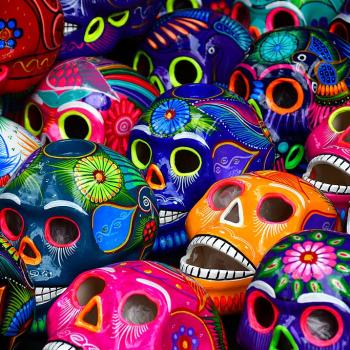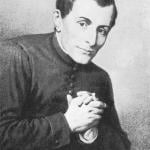PRIESTS SAY THE DARNEDEST THINGS: I’ll link you all to the video of my panel at that Fordham U. “Sexual Diversity and the Catholic Church” conference [ETA: when it is posted]. I’d intended to do a full set of notes on the conference but really I think I only have one thing to say, which is that I noticed a recurring theme of putting (what I consider to be) overly-intense pressure on what is said by priests.
You guys already know that I am basically anti-clerical in attitude. And I completely realize that my stance can be self-centered and adolescent. Viewing priests merely as sacrament-dispensing machines, as I tend to do, leaves the layperson shallow and the priest without either the support he needs to exercise his ministry or the pressure he needs to spur him to perform well. Priesthood is a leadership role, and leaders need both support and challenge in order to wield authority effectively and well.
That said, here are some reasons not to picture a priest when you picture the Catholic Church. These are reasons that a layperson-to-priest attitude of empathy at best, wry distance at worst, will serve both parties much better than a surfeit of awe.
1. Priests will inevitably say very stupid or inappropriate or hurtful things. They will sometimes say these things while specifically claiming to speak for the Church. They are wrong. Don’t give priests the power to define the Church or Her teaching in your mind.
2. Priests know they mess up, and they feel a lot of stress and sorrow over their own mistakes and flaws. Fr. John P. Duffell, a gritty New York guy of the old school whom I very much liked on a personal level (despite one thing he said which I thought was seriously, deeply wrong), made this point explicitly at the conference.
3. It’s easy to resent priests if you view them as wielding power, rather than making themselves radically available (even disposable) to their people.
4. The laity’s awe makes it easy for priests to cover up for their own or others’ sins. I don’t really think I need to give evidence of this claim. When the coverup ends, then, the awe (which should never have been extended in quite the way it was, in the first place) then curdles into furious mistrust of authority. This isn’t in any way to let priests who abuse people’s trust off the hook, just to suggest that the attitudes of the laity can make a bad situation worse.
5. At the conference many people conflated the hierarchy of the church–the priests and archbishops and cardinals and popes, all those men in odd hats–with the teaching of the Church. This allowed them to force a wedge between the Body of Christ and those aspects of the Catholic faith with which they disagreed, such as sexual morality. It also meant that the validity of the teaching stood or fell based on the personal holiness of the hierarchy. Without this conflation one would have to admit that the teaching of the Catholic Church–including Her hardest lessons–stands closer to the lives of the saints than to the lives of the popes.
A conversation in the taxi on the way back from the conference underscored some of these issues in my mind. One of the other panelists and I were talking about how institutions gain loyalty and love through creating personae. The other lady asked, “So who is the person who represents the Church, then? The Pope, I guess.”
I really don’t think it’s the Pope, and I said so. I fumbled around with some unhelpful attempts at alternative images before I figured out what I wanted to say. I said that I picture the Bride of Christ, the bride from the Song of Songs; or sometimes Mary. Those are my icons of the Catholic Church.











